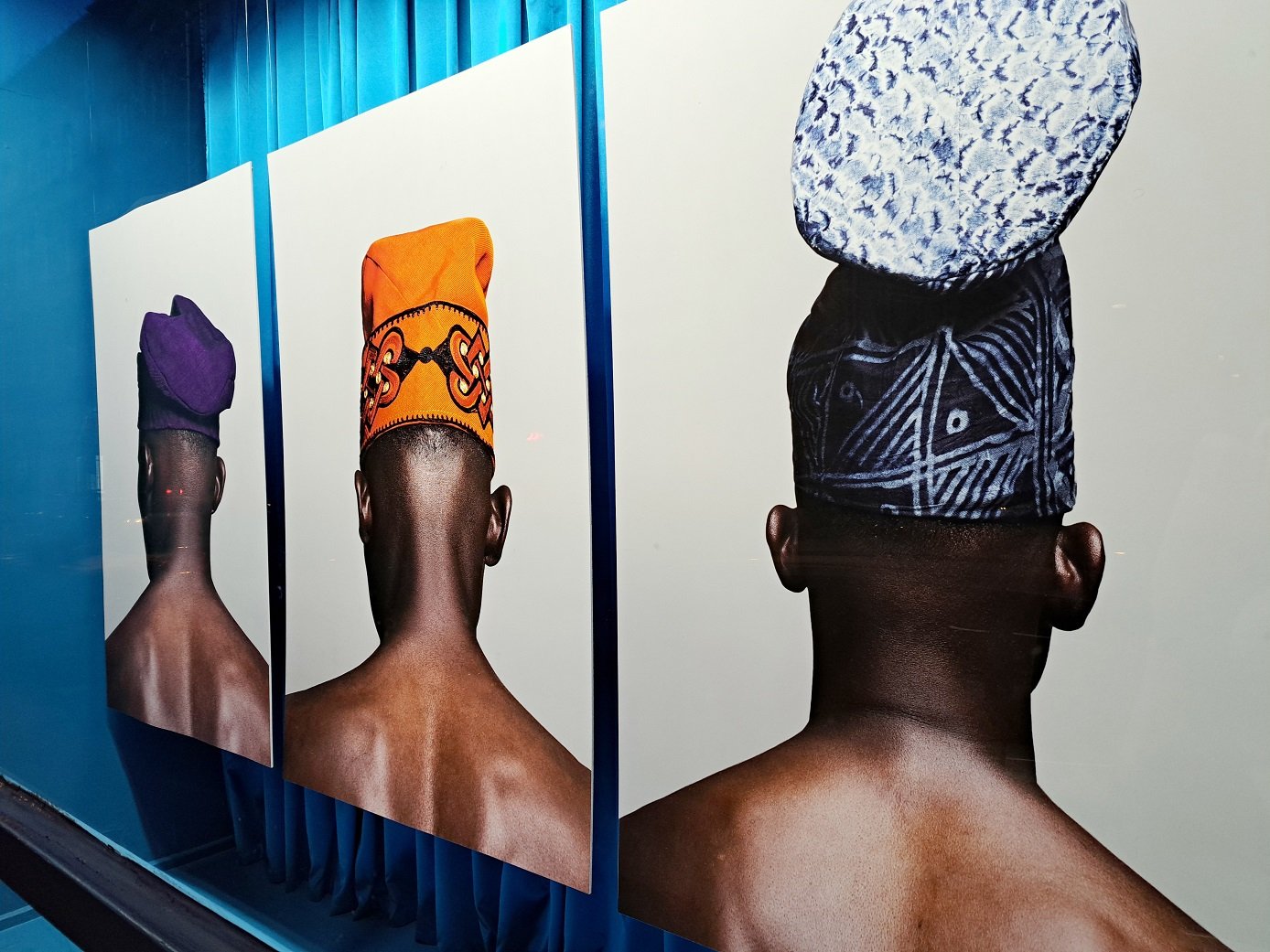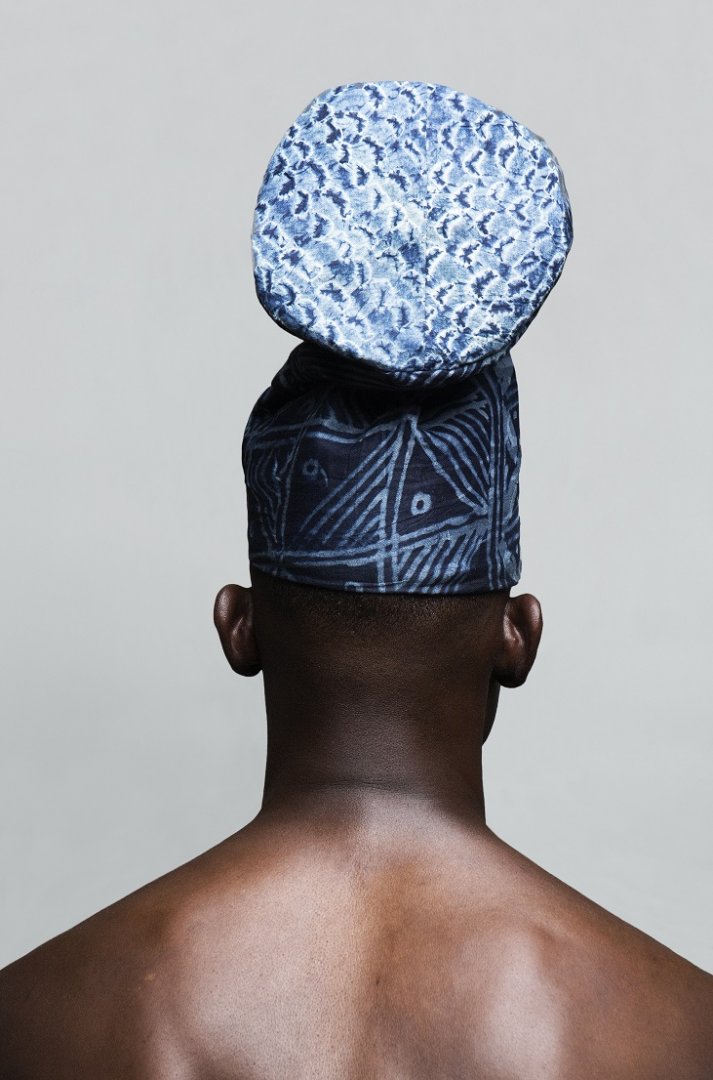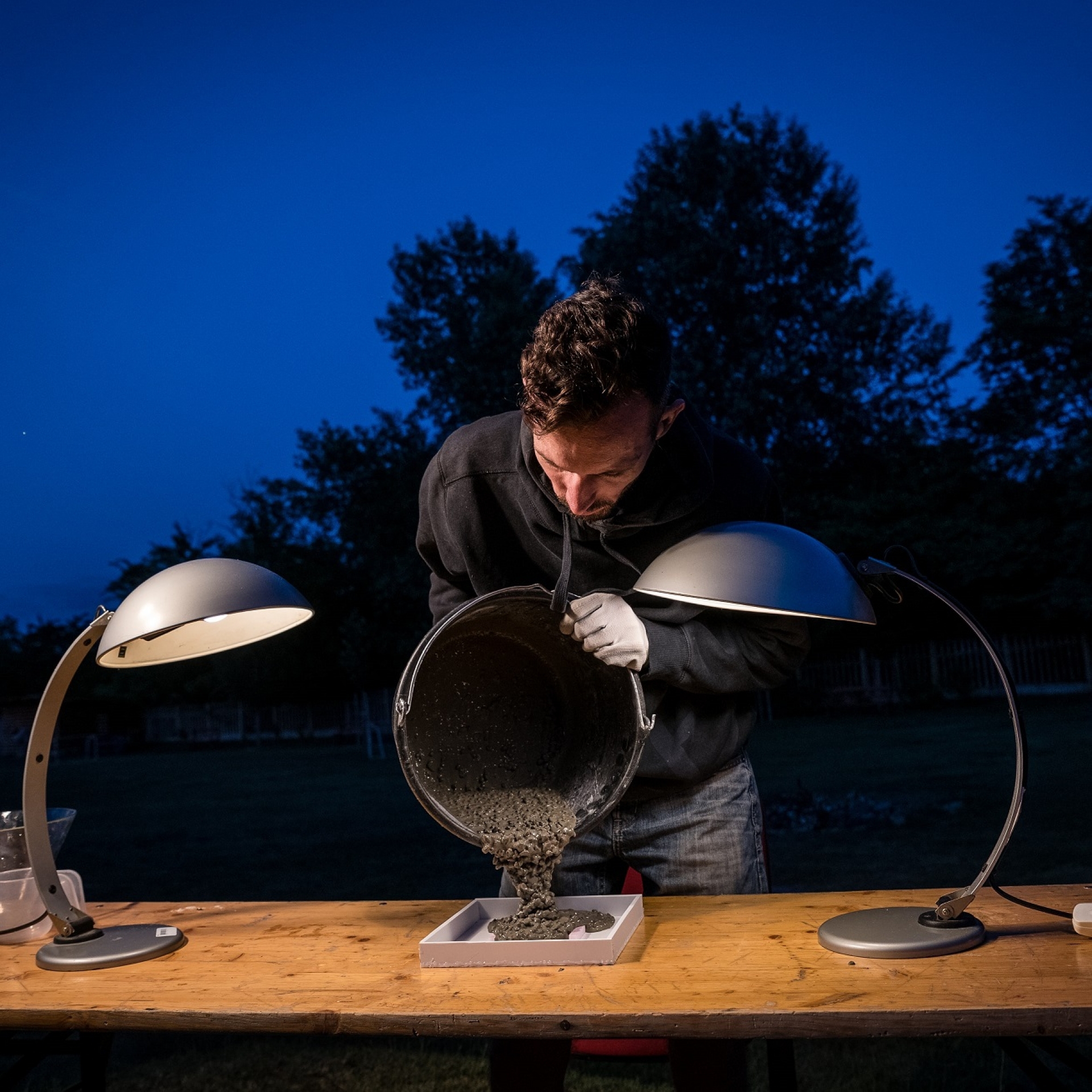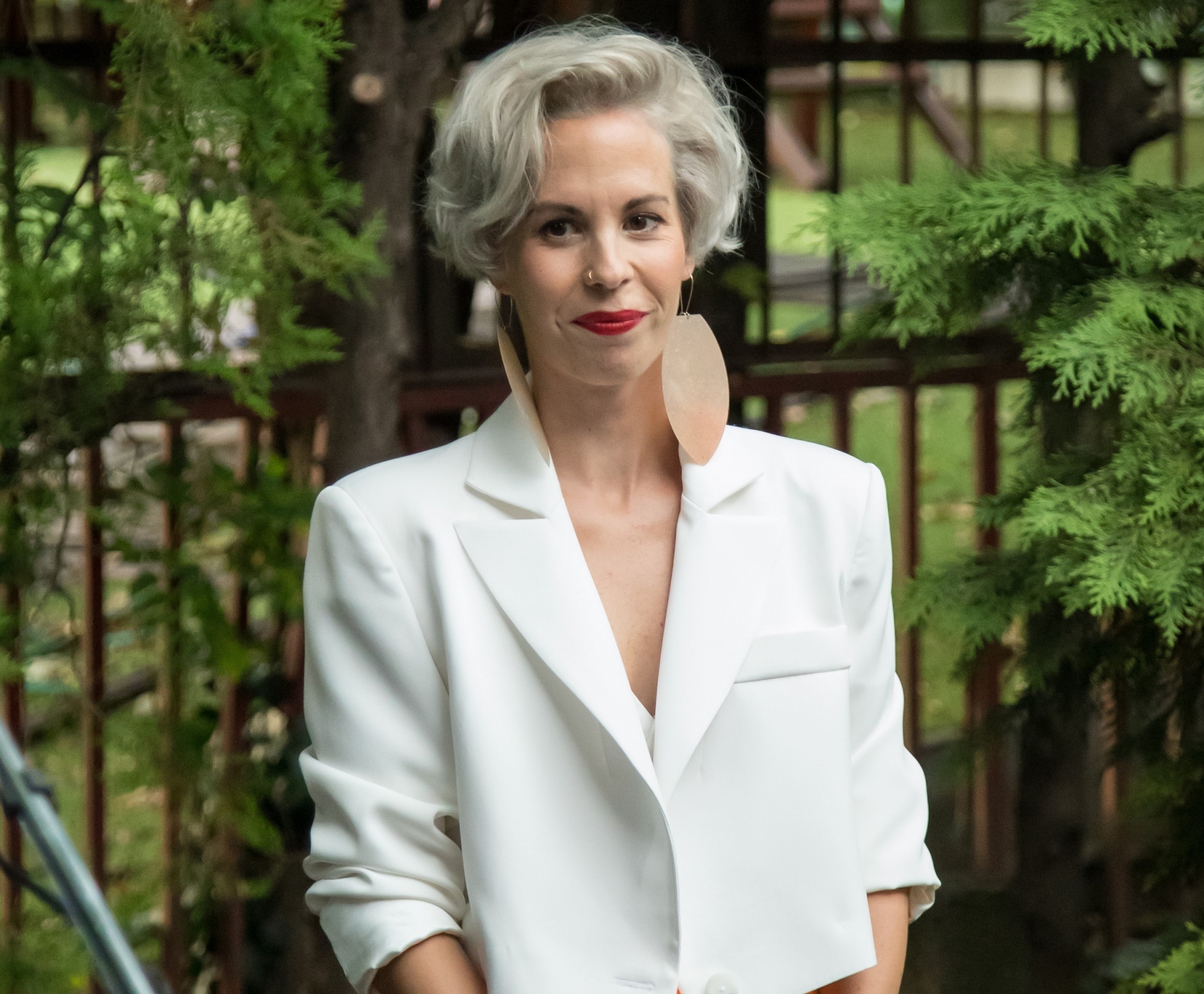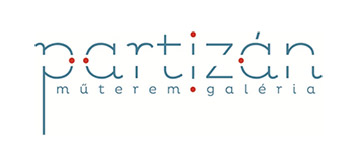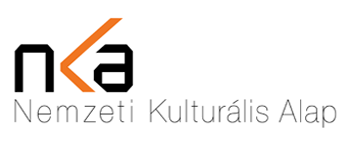Drawing inspiration from the dynamic compositions of African studio photography of the 60s and 70s, Lakin Ogunbanwo's photos also tell the story of the richness of Nigerian culture, transcending the homogenized "African experience" and monolithic approaches. The three works exhibited at Cairo Contemporary are part of the are we good enough series, in which the artist explores issues of ethnic identity and masculinity. We asked the artist.
How did the idea of your project are we good enough come?
When I returned home to Lagos after completing my law studies in London and then the training at the Spéos Photography Institute in Paris, I had a lot of arguments with my father. He didn't understand why I behaved one way or another, why I reacted differently to certain situations. I felt that these fights were never against me, rather they were only reactions to the way he sees himself and the expectations he has about me. After that, I began to observe the behavior of other men, I examined the members of his generation and my own, how we experience masculinity, how we want to present ourselves in society, how we communicate our identity to the outside world. I realized that I can express my observations and newly acquired experiences with the help of a single object: and this is the hat.
Does the hat make the man?
In Nigeria, each ethnic group has its own textiles and clothes, but the hat is also an important form of identity in my country.
I decided to use this very simple object in my works, which is an important marker of masculinity, but also reveals much more about the wearer. For example, if you go to a wedding in Nigeria, you can identify exactly who the father or husband is, who has what status in the company, only by seeing the hats.
The hat is a silent and loud statement at the same time. It is quiet, because here in Nigeria its presence is quite common and we obviously read its codes. At the same time, it's loud, because with the hat I can influence how the people around me see me, how they treat me, what they think about me.
Can the social hierarchy also be read from these hats?
Yes and no. The social hierarchy largely depends on the enviroment, typically the context helps to identify the status of the people. The hat has no role in the hierarchy because it goes beyond the headgear. Thus, although the hat may indicate a certain social hierarchy, the space and the context are more fundamental in its designation.
In the photos, the men have their backs turned. Why can't we see their faces?
This series is not a portrait of a person, but of a hat, the face would take the focus away from my subject, it would disturb the reception. When we see a face, we immediately try to figure out who that person is, what his story is about. So if I were to photograph classic portraits, we would also look at the hat in the context of the face, but I would like us to focus only on what I am trying to communicate with the hat. I focus on a single moment of identity formation.
Is your model always the same man?
I made the first pieces of the series between 2012 and 2015, when i took photos of the same man, and later I worked with several models. In 2018, when I was on a residency program in South Korea, I obviously had to find someone else there, and then for the past two years I've been using a digital model. Thus, in the past fourteen years of the series, I have had three defining models, but the photos exhibited at Cairo Contemporary were all of the same man.
Showing bare skin is very confusing, as it has an erotic connotation, while also introducing the concept of vulnerability. How do you balance these two qualities?
Your suggestion is interesting, since I could have photographed my models in their traditional clothes, which would have given more context to the viewer.
However, I discarded this for two reasons: firstly, I wanted to show the black skin color to indicate that Nigeria is a black nation.
The other reason is about vulnerability: with the clothes, I already somehow communicate myself to the outside world, I show myself as something. However, it is still a mask. On the other hand, bare skin shows us in our natural state, shows our true being, which also means defenselessness.
The light falling on the skin surface is also very exciting, it makes the figures sculptural.
It was never consciously planned, but lights, shadows and textures play an important role in my photos. I want to depict tactile surfaces, so I use strong contrasts and try to highlight the textural characteristics of the skin. The sculptural aspect is also a good observation, because during the composition I had the Benin bronzes in mind, I used their visuality as a reference, so for the Western eye I am also telling about what our traditional art is like.
How do you balance the genre of fashion photography and portraiture?
At the beginning of my career, I was more a portrait/fashion photographer, I was not yet conscious enough to elevate my images to art, while I struggled to find my position on the periphery fashion and fine art. Now I can accept that I am a portrait photographer:
my eye is drawn to the human form, and my intention is to capture its beauty.
Maybe it's my sensibility that can elevate my personal projects to art, but it's still a struggle today. Perhaps the concept behind the project, which goes beyond mere aestheticization, is strong and clear enough to consider these images as art. AZ ÖSSZES KÉP: 1. portré a művészről, 2. és 4. enteriőrfotók a kiállításról, 3. reprodukció az Are You Lying című fotóról.
While you are also able to point out the beauty inherent in the human body.
For me, the human body is the most beautiful form, but over time I also realized that interpretation and context make the human form truly beautiful. Your interpretation is how you see yourself or how you are perceived to be. In my case, this is why the way of presentation, the lighting, the model, the pose, with which I can clearly convey my thoughts about the human body, are so important.
We talk about the beauty of the form, while the silhouettes are also emblematic elements of these portraits. Consciously do you play with these?
Not at all, I just feel them. In my pictures, silhouettes, shapes, lights and composition together evoke emotions from the viewer, and I work intuitively, I sense how certain poses, gestures or movements resonate with viewers. As a self-taught artist, I have to say that for me creation is nothing more than interpreting the world around me, showing how I interpret my environment. That's why I don't want my photos to be generically interpreted as THE Nigerian identity, its specifically about A Nigerian’s (me) identity. Which automatically means there’s room for many other valid expression or interpretation of Nigerian Identity
It also has a universal aspect, since it is also about the human existence in our era.
Yes, this series also conveys a general human experience, it is about how we see ourselves. After all, the world is only what we perceive of it, nothing exists outside of us, by interpreting the external reality, you make it your own. At some level, my works are also about how we see ourselves and how we want the world to treat us.
How does the reading of these images change if they are exhibited in the Western world or in your own environment?
This series was first exhibited in Cape Town, South Africa, and then traveled around the world, including New York and other major cities. It was interesting to see how people in the West related to these images, how they read them in terms of identity and masculinity, while others found the beauty of the outfits and photos captivating. Then, in 2018, the photographs were exhibited in my home country along with my series depicting brides,... and I was undeniably moved, as it was the first time that people understood it intellectually and were able to relate to these works personally. Everyone has added their own story, which were parts of our shared reality.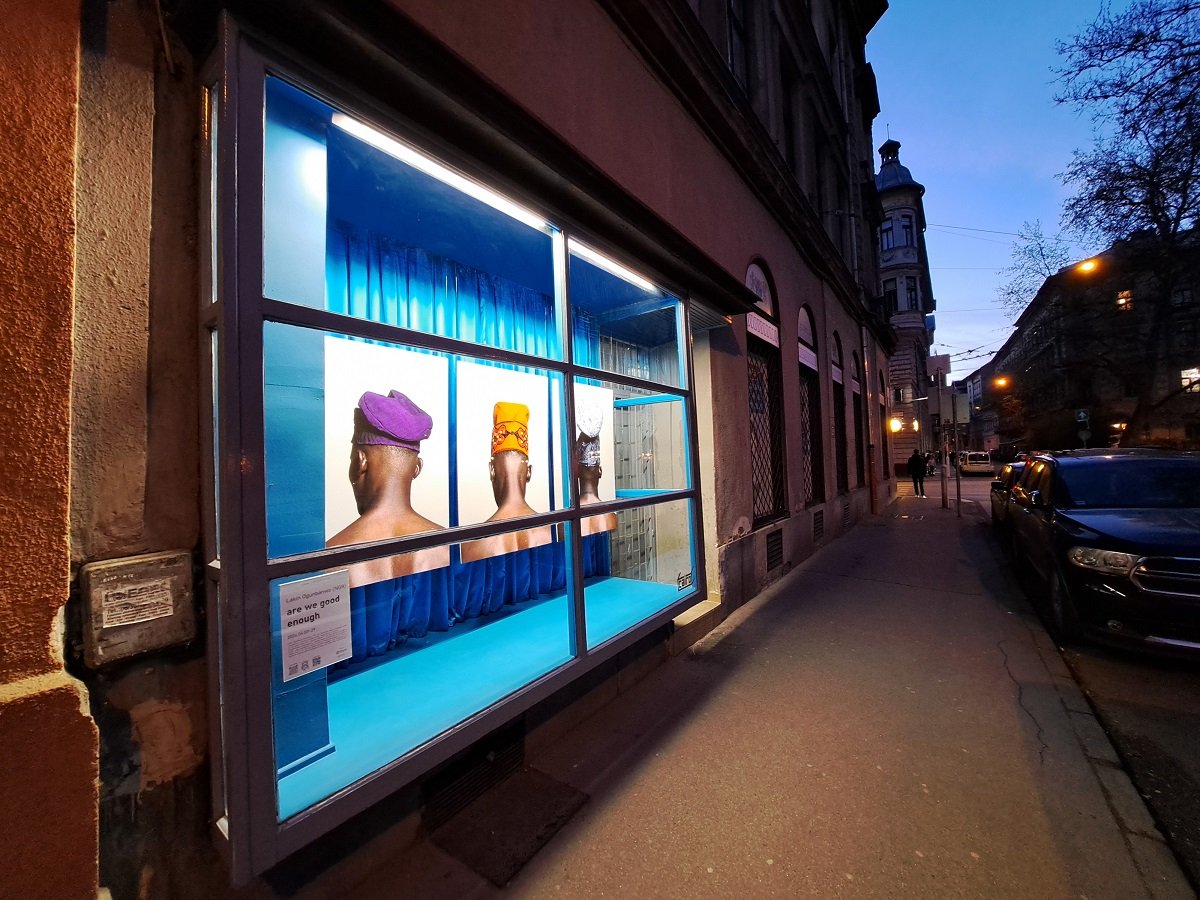
African studio photography from the sixties and seventies is an important source of inspiration for you. How do you draw from this?
The era is an important base, as studio photography became available to a wider audience at that time. Thanks to this, the photographers created a visual archive that tells a lot about the epoch, the culture, and the people of that time.
It documented the era and culture while acting as a valuable social and cultural resistance to colonialism.
Those photographs also foregrounded the African/Nigerian identity, showing its diversity and richness, reflected in the subjects' dress, facial expressions and posture. I really like the simplicity, cleanness, and no frills of these studio photos. I also really want to become a part of this visual archive after a while, so that if someone looks back at my photos in a hundred years, they will have an idea of what it was like to be a Nigerian at that time.
This reminds me that in consumer culture, people are becoming more and more schematic or one-of-a-kind. If we approach from here, then your work also plays an important role in preserving diversity.
I agree with you, we don't know yet what the significance of the works will be till later, but it really seems that the human race is becoming monoliths due to digital technologies and social media, but I am trying to capture and preserve my culture in a simple but ambitious way for posterity.
Is there an activist aspect to your works?
As a queer Nigerian man, my existence is a kind of rebellion in itself. (In Nigeria, all non-heteronormative actions are considered illegal. - ed.) My presentation of myself or my topics can be considered activism in themselves due to the external context: I am aware of how I appear in the world, but I do not want to predestine anything. When a job is out of my hands, it is no longer mine, the world does with it what it wants. However if my work or existence somehow comes in service of this, especially on issues or subjects I have strong opinions about, I won’t shy away from it.
The installation also evokes the world of studio photography: the Cairo Contemporary space is a blue box, which is a similarly theatrical situation.
This is the first time that my works will be presented in such a situation, previously they were typically presented classically, framed and hung. But I remember the time they were exhibited in a huge space in New York. It was a group exhibition where my works were excitingly enlarged and installed, which impressed me because they worked very well with the space they occupied. I felt the same way when Gábor Pintér came up with his idea: three large enlargements will hang in this blue box, which people will definitely notice when they pass by. Just as they notice you when you walk down the street wearing a certain hat. That is why the way of presentation and the basic idea of the photo series rhyme very much.
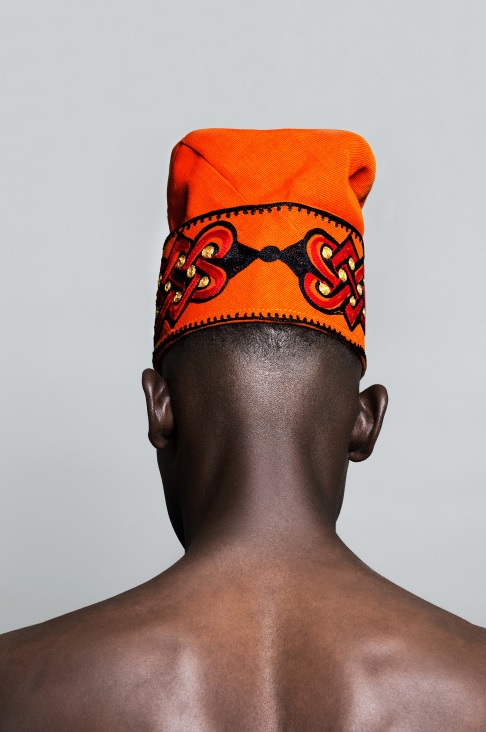
What reactions do you expect?
As I said, I'm excited about the image-making process itself, that's mine. However, when the work is finished, I release it and have no expectations regarding the work or its reception. However, I am grateful if people understand what I wanted to convey. From the conversations with Gábor and you, I gather that there will be a general curiosity about the works, and they will presumably appreciate the aesthetic aspects of the pictures as well. And if you have them, I will be eternally grateful.
What projects are you currently working on?
Lately I've been making collages, which is a new medium for me that I really enjoy experimenting with.
This is a completely new way to get close to my own works, to rediscover them for myself, since I use images from my own archive as raw material.
These were once ready-made works, but now I tear them apart, thereby reconnecting with them, while creating a new kind of composition from them. This creative process is both about vulnerability and playfulness.
My other project focuses on the Aso Ebi (Familial cloth) culture at local traditional ceremonies. If we invite a friend or acquaintance to a family event, we give them a piece of fabric made (sometimes) of aso oke textile, so that everyone at the given event wears an outfit made of the same fabric. This is a tradition, therefore it is strange that it has never been documented before. However, I have been resonating with the topic for a long time, I want to show how these materials continue to live on in our time, how they appear in contemporary clothing or everyday life.
